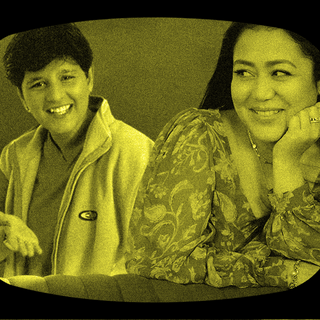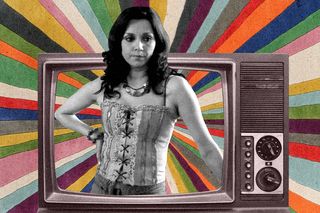
Can We Move On: From Single, ‘Older’ Women Serving as Cautionary Tales
The takeaway for young girls is that the only way they’ll ever be happy is if they have a man in their lives.

In Can We Move On, we revisit old tropes and question whether they have any remaining cultural relevance.
Bollywood’s treatment of female characters who happen to be single at an age when they should supposedly be raising a house full of children while their husband watches TV and comments on the cooking, is despicable. Period.
In 1998’s Kuch Kuch Hota Hai, Miss Braganza’s singledom — and her search for Shakespearan love — serves as comic relief. The audiences are expected to laugh at the antics of a woman, played by Archana Puran Singh, “beyond her prime” haplessly searching for romance — as if love is not theirs to claim any longer. Writing for ScoopWhoop, Srishti Magan notes, “Kamna and Tanuja Chandra’s Qarib Qarib Singlle (2017) showed a single woman in her late 30s who was willing to take a chance on love and explore life. And Karan Johar introduced Miss Braganza [in] Kuch Kuch Hota Hai (1998) for comedic relief alone.”
When Bollywood doesn’t caricature older, single women themselves, it instills a fear of age in its characters who are on the way there — thus making them the butt of jokes too. The portrayals are telling of Bollywood’s discomfort with the notion of single women beyond a marriageable age being content with their lives, and rightfully, in charge of their sexuality.
In 2003’s Kal Ho Na Ho, Lilette Dubey’s character, Jazz, is depicted as being desperate for male attention. Commenting on the character, Harshita Singh writes, “[I]t was almost offensive how desperate they made her out to be… She was either hyper focused on the wrinkles on her face or on garnering attention from men. It’s as if her only goal in life was to get hitched before she became ‘too old.'” There was one positive thing about Jazz’s character, though: she was open about her sexual needs. However, unsurprisingly, the script caricatured it.
Kal Ho Na Ho is, actually, a testament to the poor treatment of older female characters in Bollywood. Sushma Seth’s character — Lajjo, the female lead’s grandmother — is reduced to the stereotype of the nosey, judgemental neighborhood aunty who spends her day hanging out with two other nosey, judgemental neighborhood aunties. Besides gossiping, policing other women in her family, and spying on neighbors, Lajjo whiles away her time singing bhajans — just being the garden-variety daadi, basically.
Related on The Swaddle:
‘Poor Jen’ Headlines Are Misguided. Single Women Have It Good.
Perhaps, it was Jaya Bachchan’s character, Jennifer, that was the least caricatured. However, she, too, was reduced to a trope — that of the long suffering woman. She was widowed, and of course, unhappy — unlike the happy-go-lucky character of Sexy Sam, an older, widowed man in 2006’s Kabhi Alvida Naa Kehna, played by her real-life husband Amitabh Bachchan.
In other words, single older women are cast in a light that portrays them as shriveled, or past their prime — implying that sex appeal comes with a time limit. It’s a fate to be avoided at all costs, they caution. Older men, however, are given a new lease of life — allowed to mature into their age while allowing their sexuality and appeal to mature with them.
The message this sends to young audiences is one of caution; the takeaway for young girls growing up with these movies is that the only way they’ll ever be happy is if they have a man in their lives. Besides championing heteronormativity, it also conditions women to grow up associating their self-worth with their relationship status — perpetuating patriarchy by the act of normalizing it.
Just in case the messaging hadn’t been clear thus far, 2008’s Dostana chooses to be more obvious than ever before through “a disappointing, head-shaking caricature of an older, unmarried woman,” as Singh describes the character of Ishu, played by Sushmita Mukherjee. “It seemed as though the filmmakers were implying that [her] aversion to single women having that sort of freedom was a reflection of the bitterness that came with how her life had turned out.” In other words, she was so unhappy about her singlehood that she hated younger women with prospects for willingly breaking the societal norms that would probably lead them to end up old and single too — just like Ishu did.
Magan believes this is simply a result of “[women’s] stories and characters written from a female gaze [being] better than the ones written by men.” This is, perhaps, why film critic Sucharita Tyagi continues to champion “women telling women’s stories.” Case in point: Lipstick Under My Burkha, which was written by Alankrita Shrivastava. Commenting on Srivastava “dar[ing] to portray the sexual desires of older women in [her story],” Magan writes, “Men, it appears, can’t fathom writing about a woman’s sexual desires, though the male population feels far too comfortable in sexualizing young female actors and forgetting women when they get older.”
Related on The Swaddle:
How the Indian System Keeps ‘Single’ Women Dependent on Others
However, the trope doesn’t seem to stem from just the Y chromosome. If that truly were the case, Maduri Dixit’s character in Aaja Nachle (2007), and Vidya Balan’s in Kahaani (2012) might never have materialized.
Instead, the trope appears to stem from patriarchy’s inherent discomfort with single women getting older and being happy by themselves — without, gasp, a man. It threatens the status quo of women needing a man to feel fulfilled– causing men to feel less important, and women who may have internalized the belief and lived their lives accordingly, to question their choices. Older, single female characters, then, become the site of manipulation — simply so writers espousing patriarchal values can feel better about themselves, and prevent the existential crisis of whether they have lived their own lives being guided by social constructs.
The notion of an older, single woman who is happy and content is a rejection of patriarchal scripts. There’s something subversive about women who choose the less trodden, more norm-challenging path in a bid to be free of the shackles of domesticity. Arguably, many institutions in society would collapse if more women chose this path: marriages would no longer hold, nuclear families would break down, bloodlines would halt, and entire workforces would collapse under the weight of unpaid labor that is no longer performed by a wife at home.
An older, single woman symbolizes someone who, if emulated, could threaten societal structures thus — and that’s what makes her so dangerous. Neutralizing that threat through humiliating her, instead, ensures that women are ideologically primed not to take that path.
In our endeavor to build a more equal world, then, it’s important to retire the trope of treating single women above the age of 30 as butts of jokes. Their lives aren’t cautionary tales either — arguably, they’re aspirational instead.
Devrupa Rakshit is an Associate Editor at The Swaddle. She is a lawyer by education, a poet by accident, a painter by shaukh, and autistic by birth. You can find her on Instagram @devruparakshit.
Related


The Buzz Cut: Spiritual Guru Helpfully Reminds Women That They’re Not Okay
